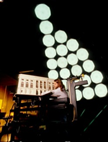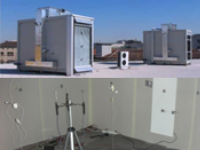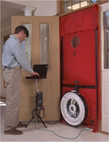PoliTo Field of Specialization
Energy Efficiency in Buildings
Energy efficiency is by far the cleanest energy source for the future of Mankind, and Europe has great ambitions to cut greenhouse gases emissions working on the demand side. Polito has been active on energy efficiency in buildings for more than 40 years, carrying out theoretical research as well as experimental, in the lab and in the field.
There are a number of topics in which Polito is particularly active:
• Energy assessment of buildings, dealing with the development of new methodologies based on operational rating, consisting of long term monitoring of buildings and their installations, to disaggregate the energy use for heating, cooling, ventilation, lighting and to monitor indoor environmental conditions; and calculated rating, carried out both using simplified and dynamic simulation models.
• Active transparent façades, i.e. façades with two or more glazed layers separated by a ventilated air gap exhibit a complex thermal and fluid dynamic behaviour. Measurements and numerical modeling are needed to fully understand it. An experimental facility named TWINS (Testing Window INnovative Systems), consisting of two test cells equipped with 70 sensors, has been realized to that aim.
• Natural and hybrid ventilation systems may provide good air quality and a comfortable indoor environment while reducing energy demand for fans, and heating and cooling. However, the best operational strategies have to be identified and design and simulation models to predict the flow rate and pollutants distribution have to be developed. Tracer gas techniques are used for in field measurements, along with blower doors to assess window and doors air tightness. Thermo fluid dynamic analysis of the built environment requires extensive numerical analysis performed by means of commercial CFD (Computational Fluid Dynamic) codes and of purposely developed zonal models.
• Thermal comfort and indoor air quality are assessed through in situ investigations. The comparison between subjective and predicted votes, these last deriving from the objective monitoring of thermal parameters, allows the validation of different existing criteria, based both on a deterministic and on an adaptive approach.
• Lighting and daylight control systems is a widespread technique aimed at realising "sustainable" buildings, but expected results are seldom achieved in practice. Research activity is needed in order to analyze the drawbacks of lighting controls, and to provide guidelines for the correct design of light control systems. The CERSIL artificial sky allows the simulation of natural lighting in buildings using small scale physical models.
Today there about 30 people from the permanent staff, grant holders and PhD students working in this area at Polito's Department of Energetics (DENER).
 |
 |
 |
| CERSIL Artificial Sky |
TWINS Test Cells |
Blower Door |
Electrochemical Systems for Energy: Fuel Cells and Hydrogen
Research about Electrochemical Systems for Energy has been carried out in the last 15 years at the Politecnico di Torino. A research group of around 20 people from two different Departments share skills, facilities and main scientific outcomes. In particular, Politecnico di Torino is involved in the modeling, design, materials, production, testing, prototyping of:
• Solid Oxide Fuel Cells (SOFC): materials, layers, sealants, cells, short-stacks, systems
• High temperature co-electrolysis of H2O and CO2 for syngas production (SOEC)
• High pressure electrolysis systems
• Integration of electrochemical systems with renewable sources of energy (RES)
• hydrogen storage in adsorption systems (MOF, zeolites, activated carbons, metal hydrides)
Laboratories:
• Test stations for the analysis of single cells (different geometries) short-stack, stacks (1-2 kW) SOFC/SOEC
• furnace for the high temperature characterization of SOFCs’ components;
• 5 kW complete SOFC system;
• high pressure electrolysis;
• hydrogen storage in solid structures
• micro- and nano-structural characterization equipments including SEM, FESEM, microprobe compositional analysis (WDS, EDS), heating stage optical microscopy up to 1500°C, X-ray diffraction with heating stage, thermal analysis (DTA, DSC, TGA), porosimeters, as well as Mass Spectrometry and supporting instruments to characterize the surfaces of materials (Fourier Transformation Infrared Spectroscopy, UV-Visible Spectroscopy).
► Back to Specialization of Core Universities